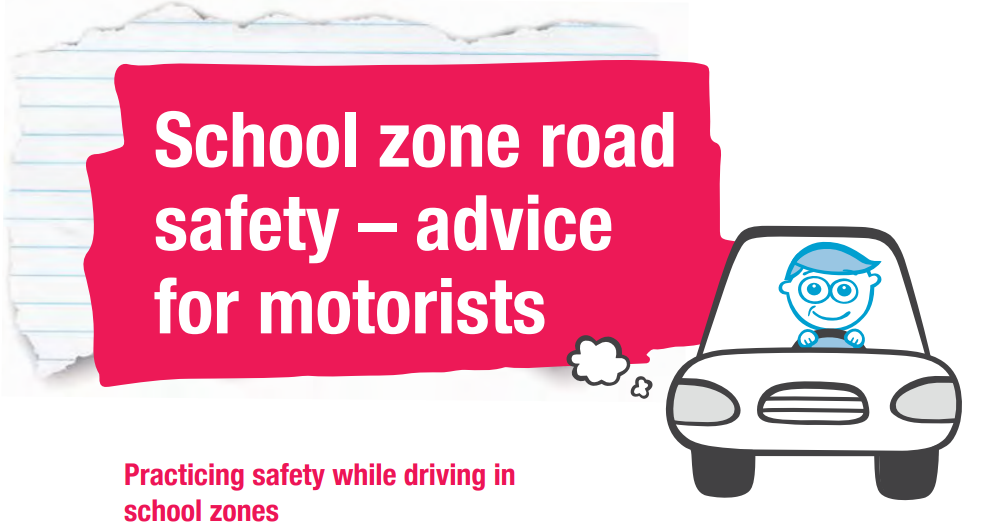Practicing safety while driving in school zones

School zones can be busy places, especially during the start and end of the school day—making them risky environments for both motorists and pedestrians.
School zones are frequented by some of the most vulnerable members of the community including children and their families. Children do not always understand the dangers of roads and vehicles, so
it is important for motorists to follow road safety rules and model correct road safety behaviour to protect children and teach them how to behave.
Pick-up and drop-off are the busiest times outside a school. With an increased number of pedestrians and vehicles around, motorists need to take care and abide by the enforced 40 km/h school zone limit to keep the roads safe for everyone.
When parking on school grounds or the roads and streets around school, and when moving through the drop-off and pick-up zone, take extra care.
Always obey signed parking rules to provide a safer environment for children.
School zone speed limits
When entering the zone, you will see a sign, which displays:
- the reduced speed limit
- times when this limit is in place.
Most school zones in Queensland operate from 7 am – 9 am and 2 pm – 4 pm.
Drop-off and pick-up areas
For our school zone to be safe, parents and carers need to:
Be timely
- If the children you are picking up are not ready, drive around the block and re-join the queue.
- Teach children to look out for your vehicle and to get in quickly and safely once you are stopped.
Stay within three metres of your vehicle
- Leave the vehicle only to open the boot and help children with their bags.
Move forward
- Think of the zone as being like a smooth flowing taxi rank.
- Stop as close as possible to the head of the zone to allow other vehicles access to the zone behind you. Stopping at the back end of the zone when there is space ahead endangers children.
Parking signs and markings
You should always check parking signs carefully near schools as they are often stricter than normal parking rules. The type of parking restriction, and the times that it applies, will be on the sign.
Top offences
These are the top offences relating to stopping in school zones:
It is an offence to stop:
- 20 metres before or 10 metres after a signposted pedestrian or supervised children’s crossing
- 20 metres before or 10 metres after a bus stop or within a bus zone (bayed area)
- within 10 metres of an intersection or corner
- on a footpath or nature strip within a built-up area
- in a way that restricts access to a driveway
- in a no parking zone for more than 3 minutes, in a no stopping zone or on a yellow painted line
- double parked at any time, as it blocks visibility and causes cars to overtake each other to proceed creating a traffic hazard.
Driver distractions: mobile phones
Driving while using a mobile phone held in your hand is illegal, so even if you're stopped in the school zone, you can't:
- hold the phone next to or near your ear with your hand
- write, send, or read a text message
- turn your phone on or off
- operate any other function on your phone.